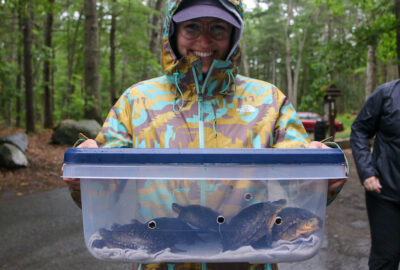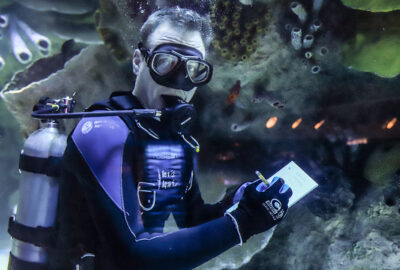Get Up Close to an Axolotl at the Aquarium
Axolotls are just one of the animals you can see at the Aquarium during our rotating live animal encounters. Read on to learn more about these unique amphibians.
By New England Aquarium on Monday, May 13, 2024

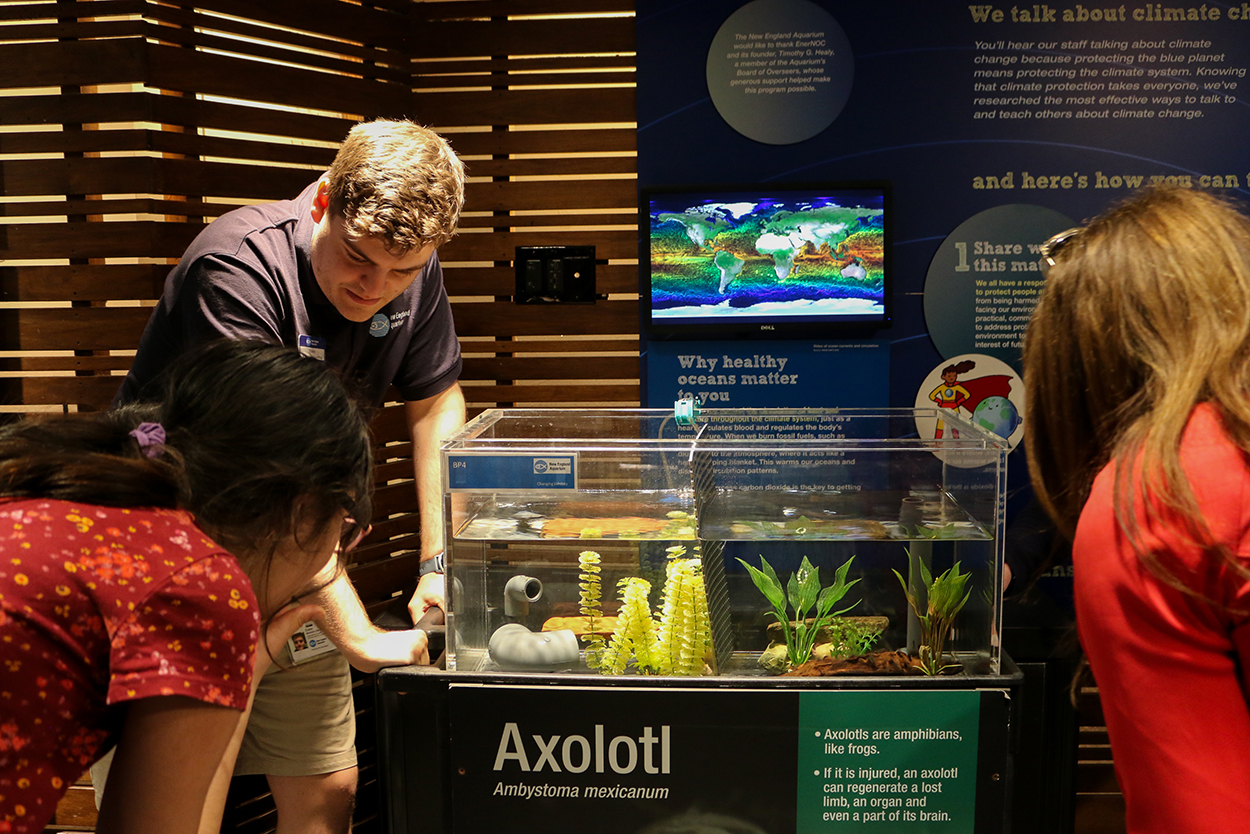
“Have you ever seen an axolotl?” Colin McIntire asked a crowd gathered around the tank in the Aquarium’s Blue Planet Action Center.
As an educator on our Conservation Learning team, Colin helps Aquarium guests discover and learn about the many different animals in our care. On this day, he gave visitors an up-close look at our three axolotls—an experience that’s recently returned after a pandemic hiatus.
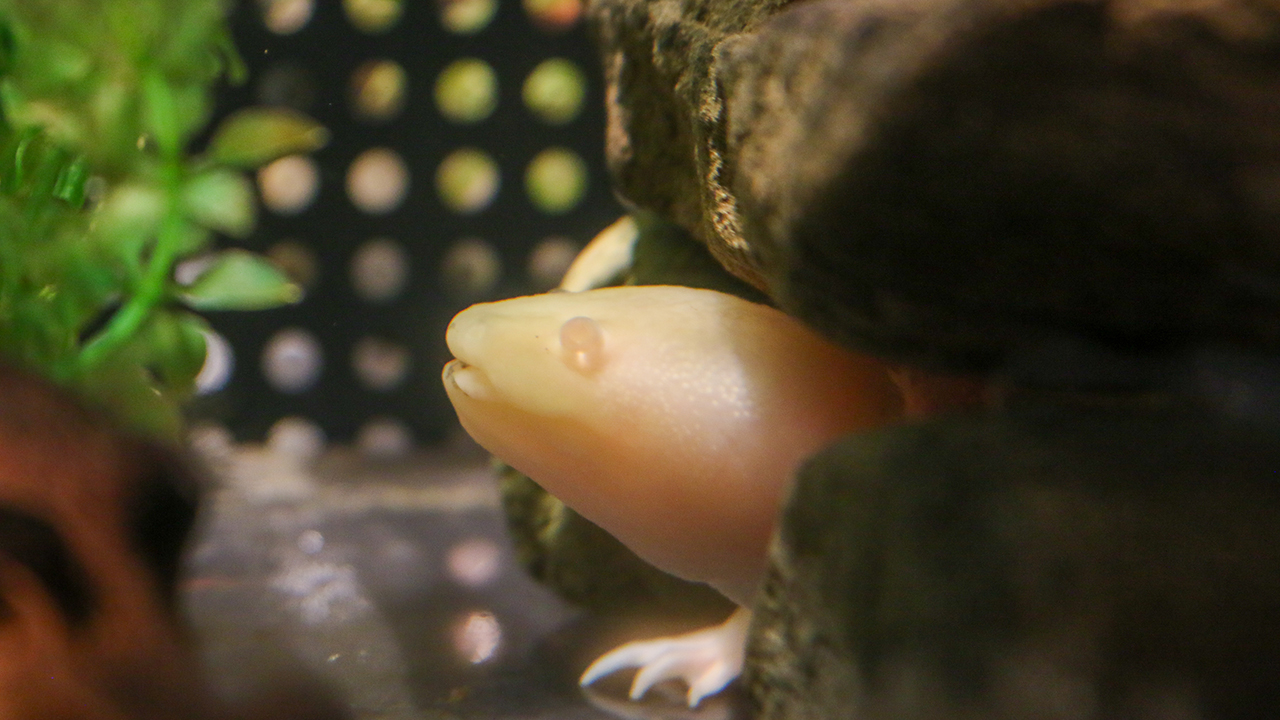
Axolotls are fully aquatic salamanders and are endangered in the wild. Their sole habitat is in the waters and wetlands of Lake Xochimilco in Mexico City, Mexico. Axolotls’ unique appearance is due to a phenomenon called neoteny; they maintain juvenile characteristics, such as their frilly external gills, throughout their lives. When portrayed in popular culture or displayed as pets, they’re bright pink to white—eye-catching colors for cartoons and photos, but not as helpful for avoiding predators.
Of our three axolotls, only one, our male “Chi,” is pink, with the exception of a small patch right above his eye. This coloration is caused by a genetic mutation known as leucism. In the wild, axolotls look more like “MC” and “Fantasma,” our two females that are primarily mottled brown in color.
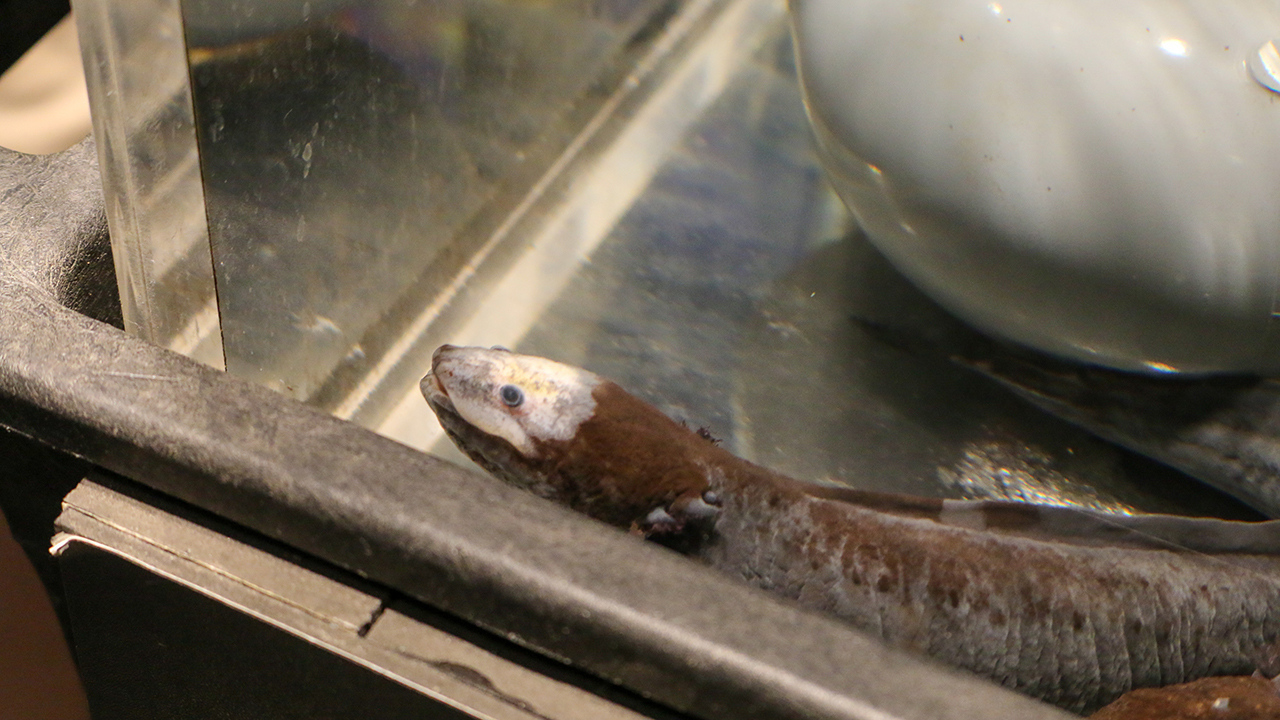
“Some guests are very familiar with axolotls, and some only know them from social media or video games, and some have not heard of them at all,” said Kate Tillotson, a senior educator here at the Aquarium. “But overall, I’d say most people seem excited to see them when we have them out.”
That excitement was apparent. As visitors spotted axolotls in their tank, “wow” was often their first reaction. Our three axolotls live behind the scenes at the Aquarium, so their recent return to the floor is exciting for both guests and our staff. They’re a unique animal that many people don’t have the chance to experience in person.
While axolotls and their natural habitat may seem remote to those here in New England, there are important connections to be made. “The issues faced by axolotls, such as habitat loss and degradation, closely resemble those faced by many amphibians here and in ecosystems globally,” Kate said.
Locally, amphibians rely on vernal pools—temporary bodies of water that occur seasonally in New England forests—for raising tadpoles free from threats by larger predators. But these areas are under threat from human development, just like the axolotls’ native Lake Xochimilco.
So, even though axolotls in the wild live nearly 3,000 miles from the Aquarium, learning about them—and conservation efforts to protect them—can help amphibians in our own backyard, too. “There are many things we can do,” Kate said, “such as working to protect land through land trusts and parks, voting with the environment in mind, and spreading the word to get people on board with conservation efforts in our local communities.”

